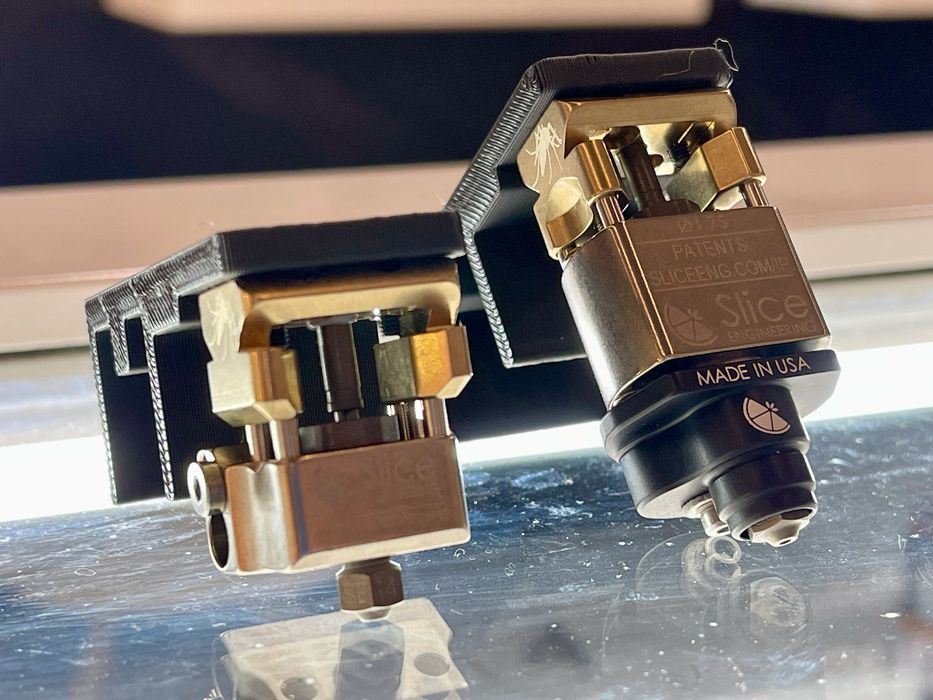
I had a look at Slice Engineering’s highly unusual Mosquito Conduct hot end, and was surprised to find it doesn’t need a fan.
Hot ends are a critical component of any FFF 3D printer. That’s the zone in which the filament transfers from a “cold” zone to a hot chamber where it softens before extrusion.
The most important property of a hot end is to ensure that the hot zone stays hot, and the cold zone stays cold. Most of the typical hot end designs achieve this by physically isolating the heater block with standoffs, and using prolific cooling fins on the cold zone. Those cooling fins then are exposed to cool air flow from a fan.
If the fan isn’t working, then “heat creep” occurs. In this scenario, stray heat from the hot zone creeps up into the cold zone, and in the worst case could soften or melt the filament.
That’s a big problem because the cold zone is not designed for softening material, so you end up with a jam that most likely will require disassembly and severe cleaning measures.
That’s why fans are so important on a hot end.
But the Mosquito Conduct has NO FAN.
The Florida-based company specializes in high end hot ends, nozzles, extruders and other components for FFF-style 3D printers. They sell components not only to individuals, but also to OEMs to include in their high performance 3D printers.
Their Mosquito Conduct uses a solid bronze chunk of metal as a heat sink. Instead of blowing away heat with a fan, their system instead soaks up stray heat into this bronze rail.
As you suspect, the bronze part does have a heat capacity, so Slice Engineering recommends mounting it in a certain fashion. They explain:
”The Mosquito Conduct needs to be mounted to a metallic part or carriage that can help conduct heat away from the Base. That mating part must have 88 cm2 of surface area exposed to room temperature air for radiative and convective heat transfer to facilitate cooling, or use liquid cooling.”
In spite of the unusual passive design, the Mosquito Conduct can apparently withstand 500C temperatures, the hottest you’d find in the FFF space. They say it “eliminates heat creep and reduces jamming”, and should increase print quality.
An interesting side effect of the bulky bronze block is that the hot end is more rigid, meaning it’s far easier to change nozzles. Slice Engineering describes this as a “One-handed Nozzle Change”.
They say the Mosquito Conduct is suitable for use on basically any FFF 3D printer, even dual, IDEX or multiple head devices. It’s easy to adapt the mounting system for any configuration.
There’s one other benefit they don’t seem to mention that I think is important: it’s quiet.
Desktop FFF 3D printers were initially quite noisy. I still remember my original MakerBot “singing” as it built poor-resolution objects. Then in recent years advanced stepper motor drivers have emerged, and the singing stopped.
Nowadays desktop FFF 3D printers are nearly silent.
Except for the fans. The fans ruin an otherwise totally quiet experience. By eliminating the hot end fan, Slice Engineering has reduced fan noise significantly. However, most machines also sport a fan for the controller board, but perhaps that will also be eliminated by an ingenious passive cooling design.
Then we’ll be able to have truly silent 3D printers. Quiet rules!
